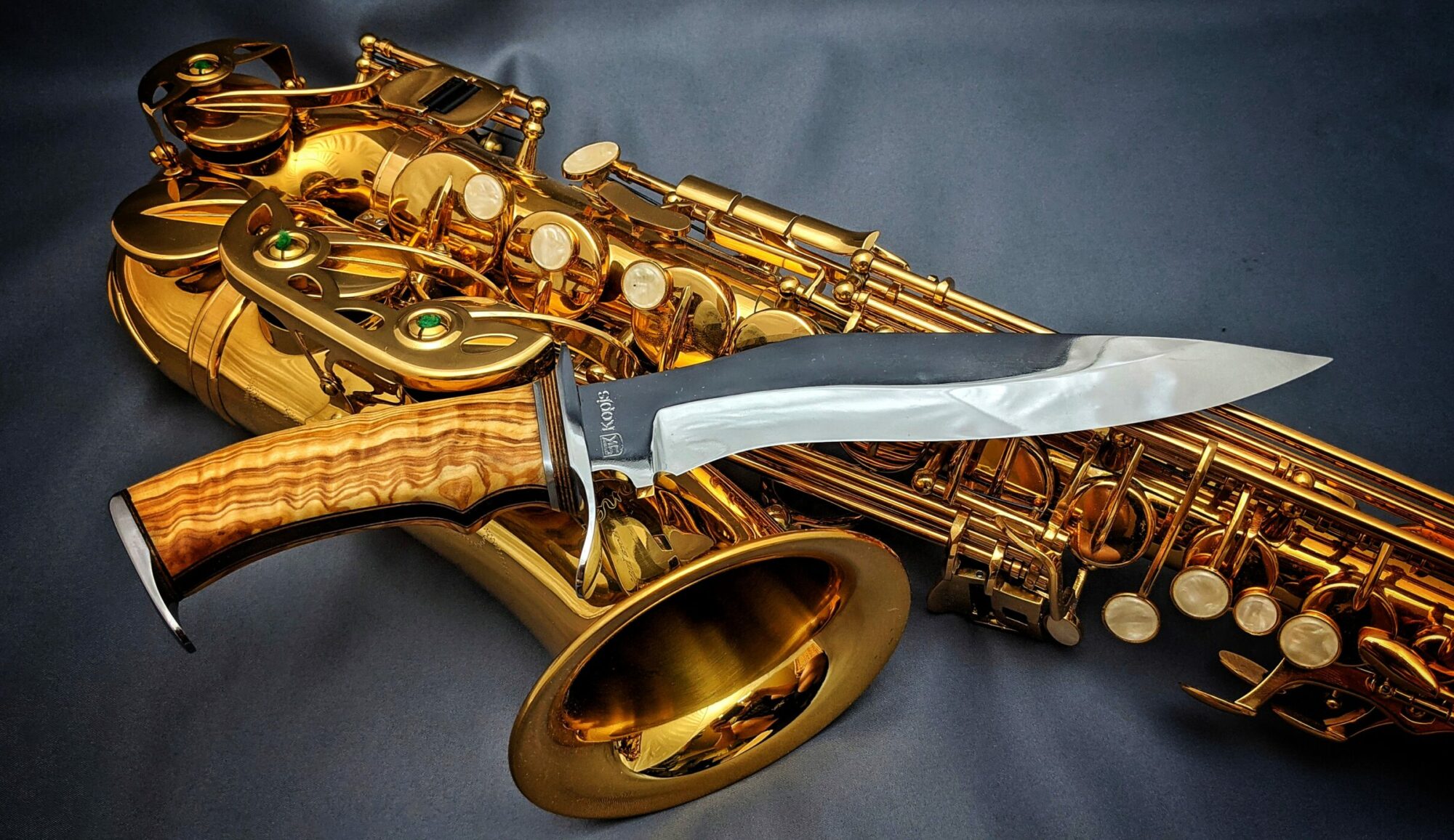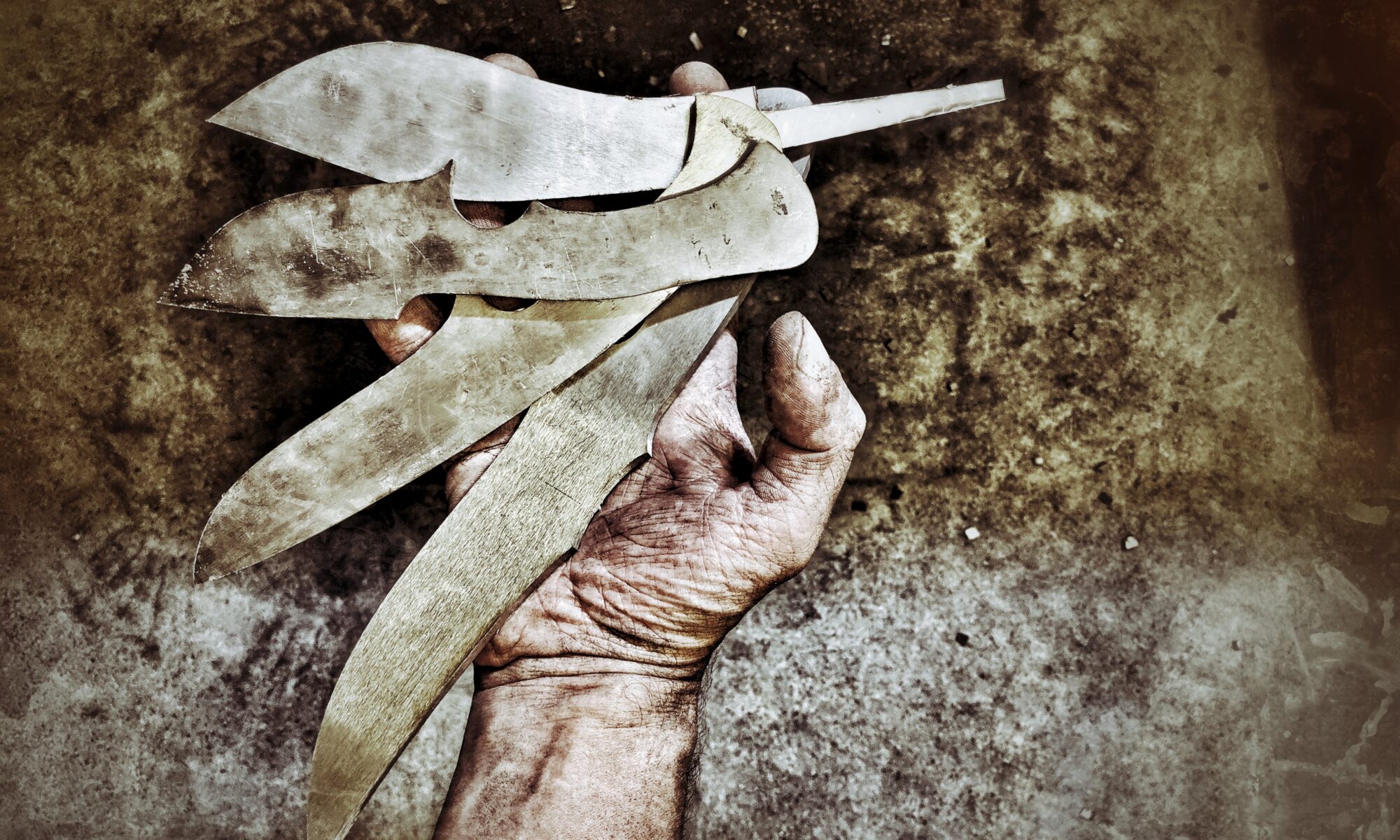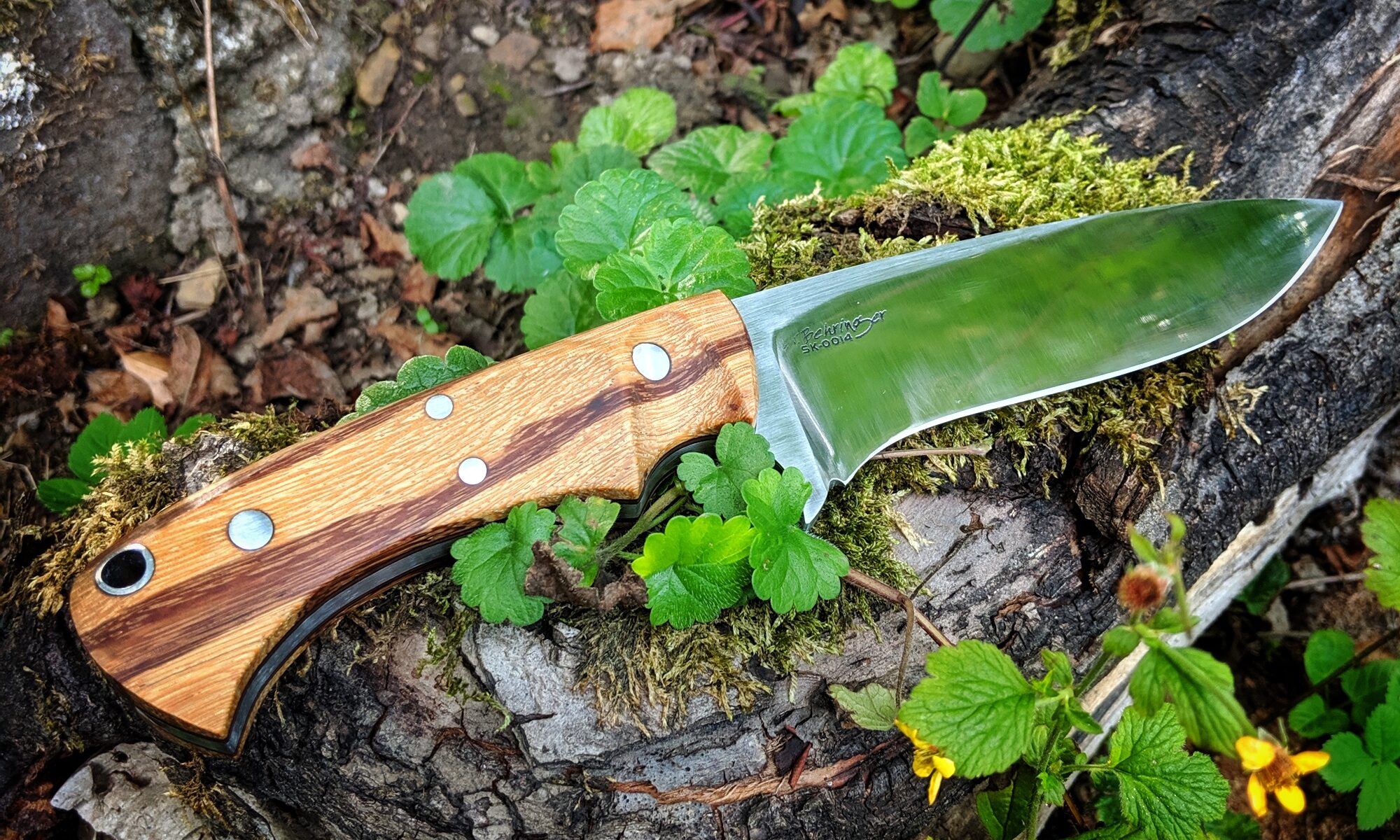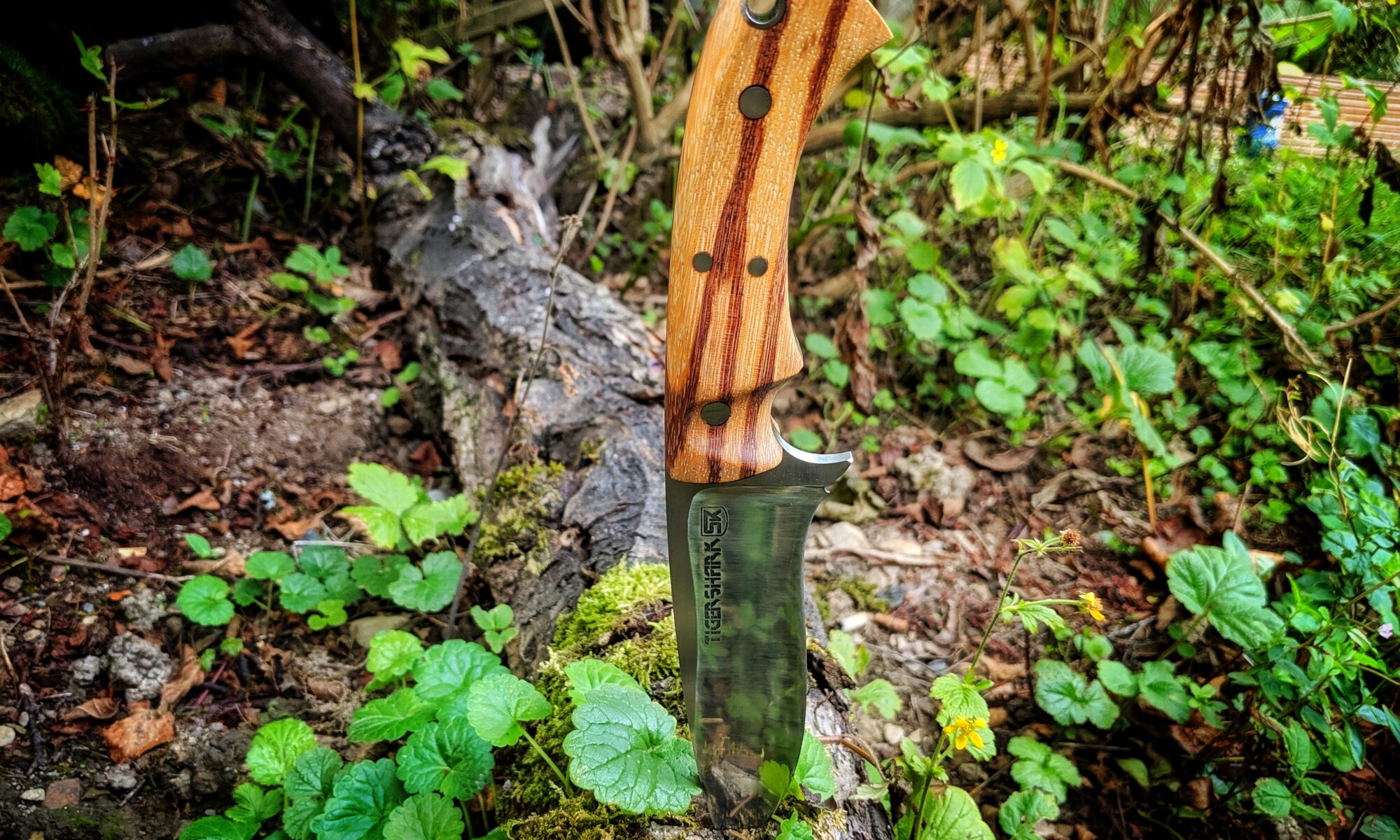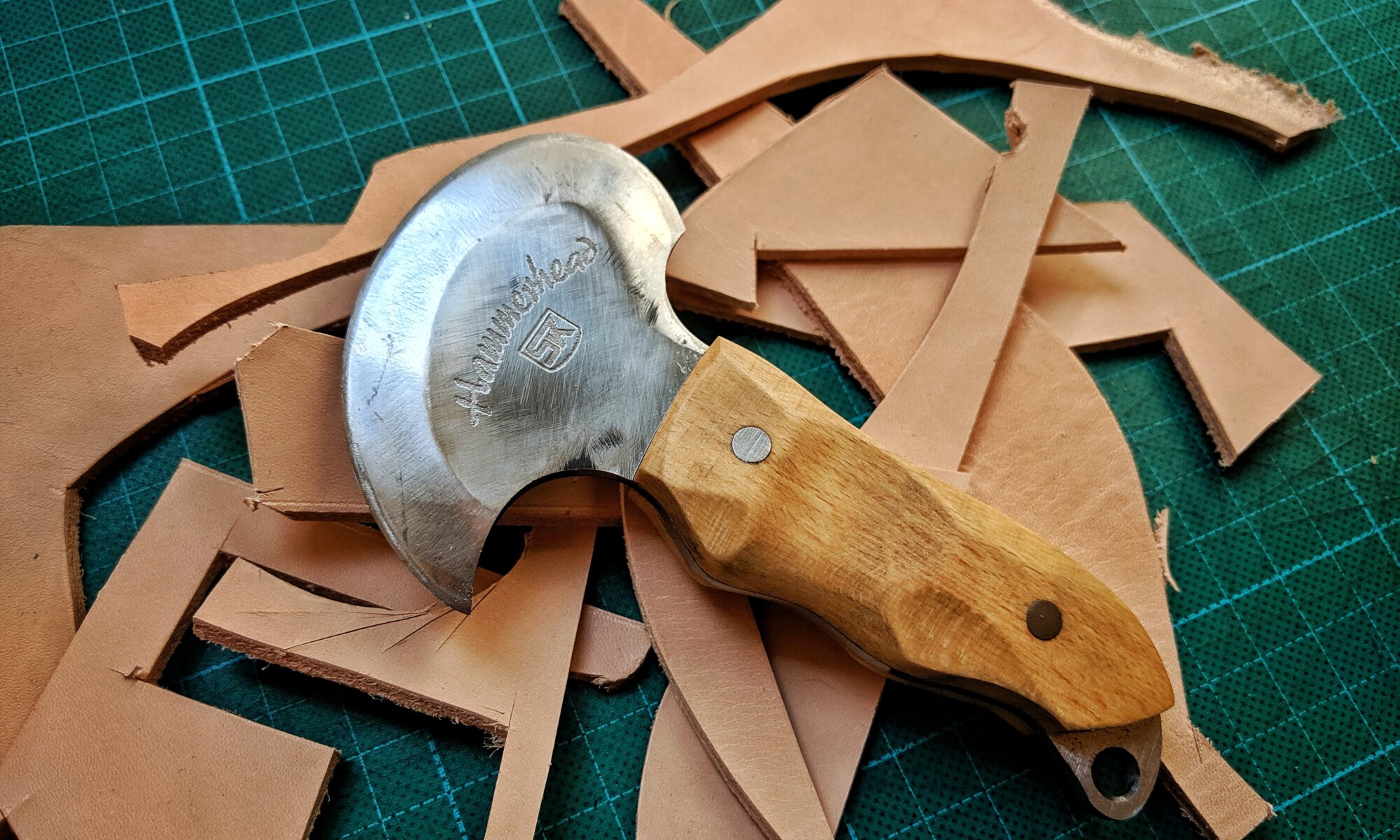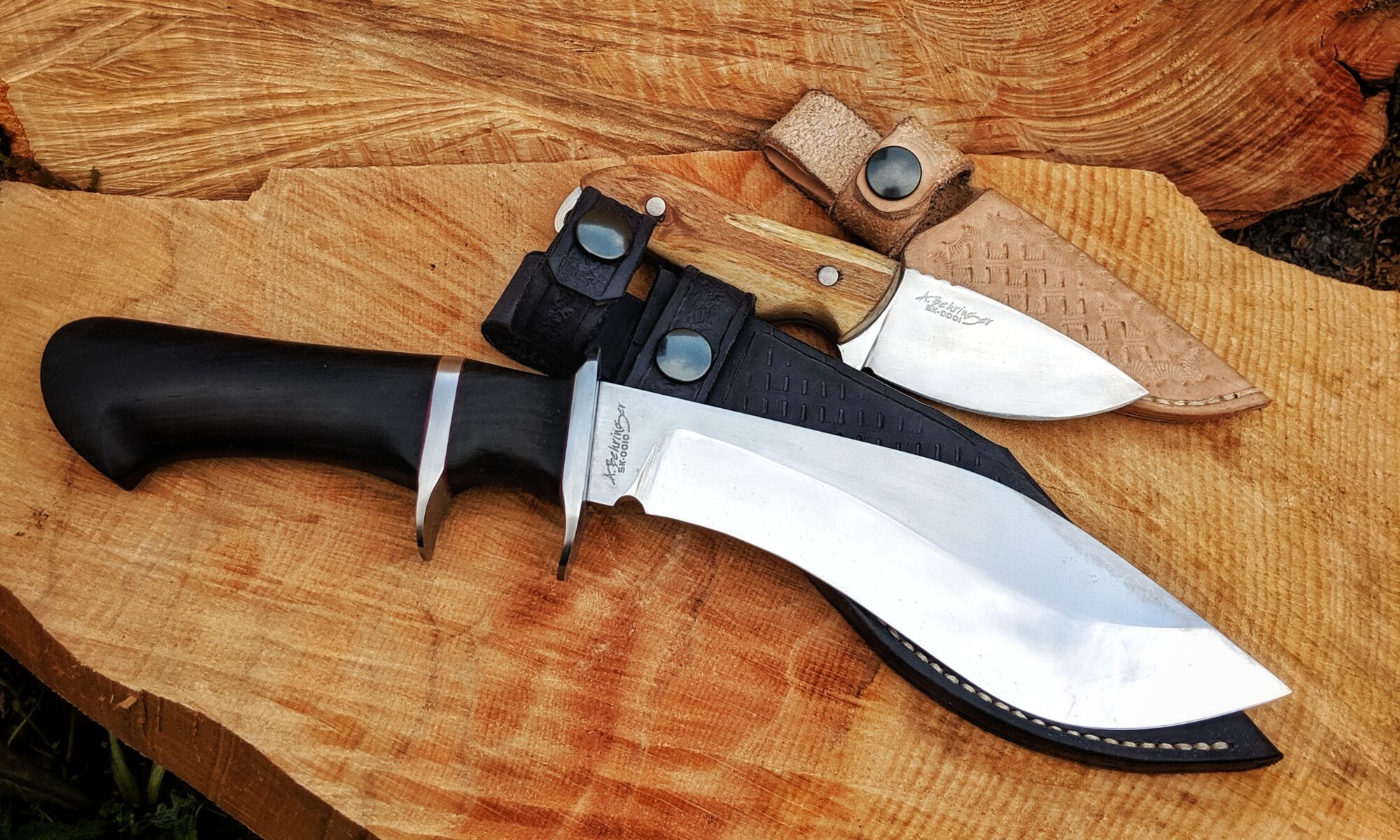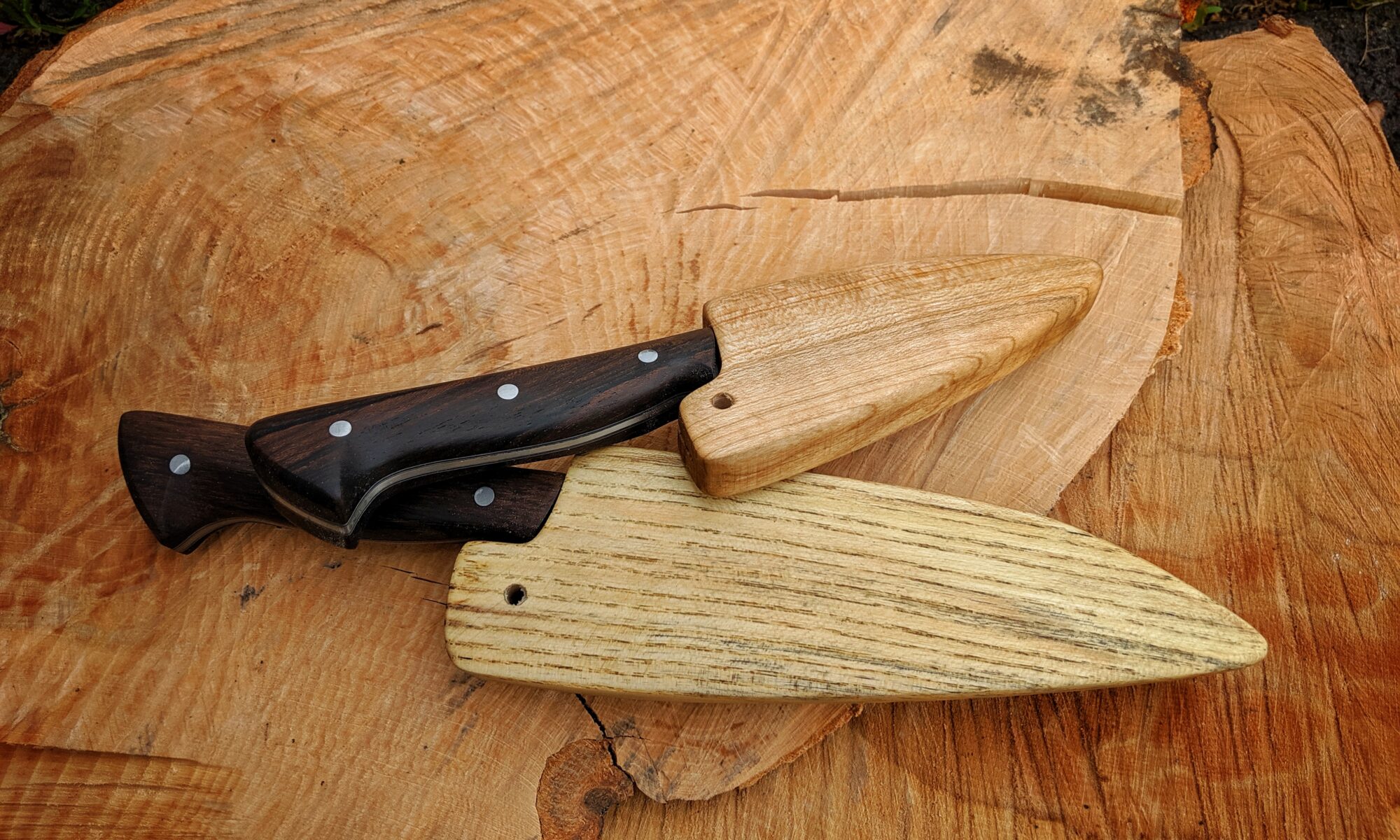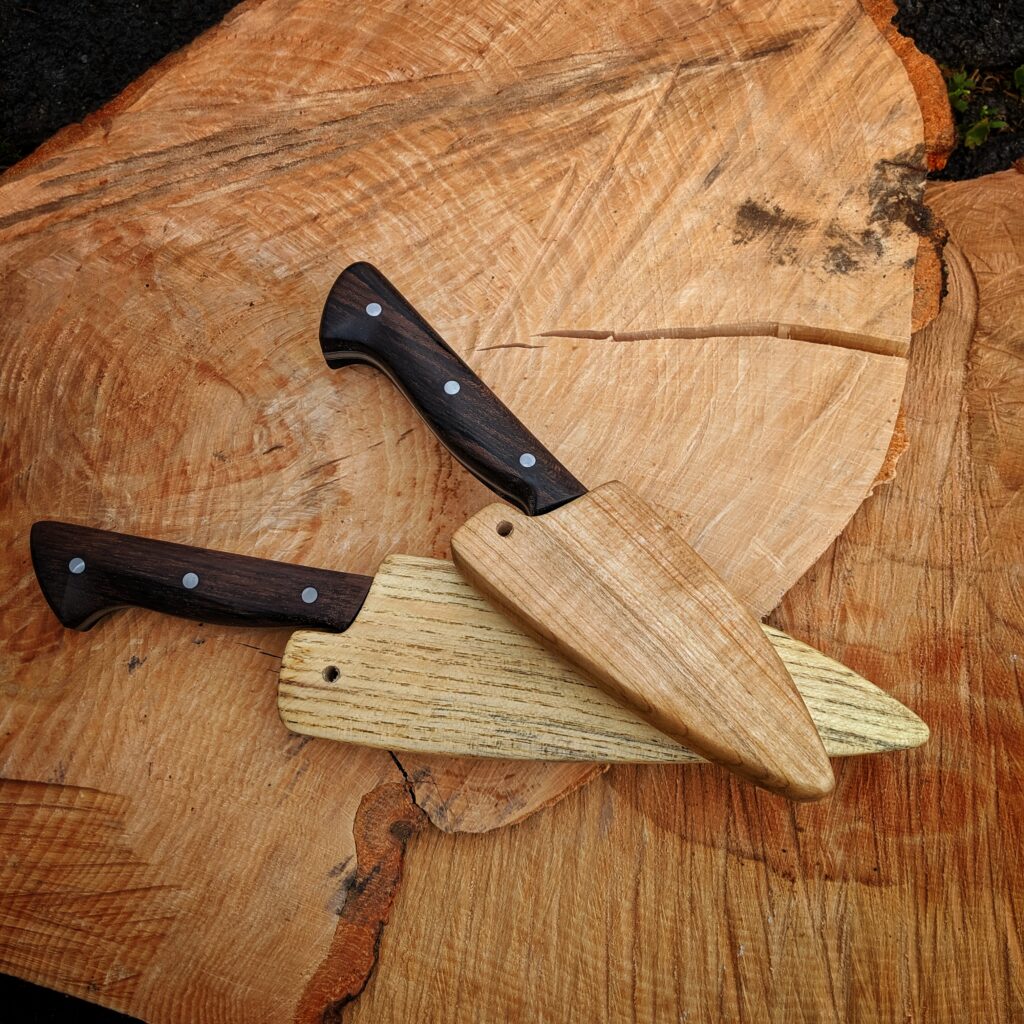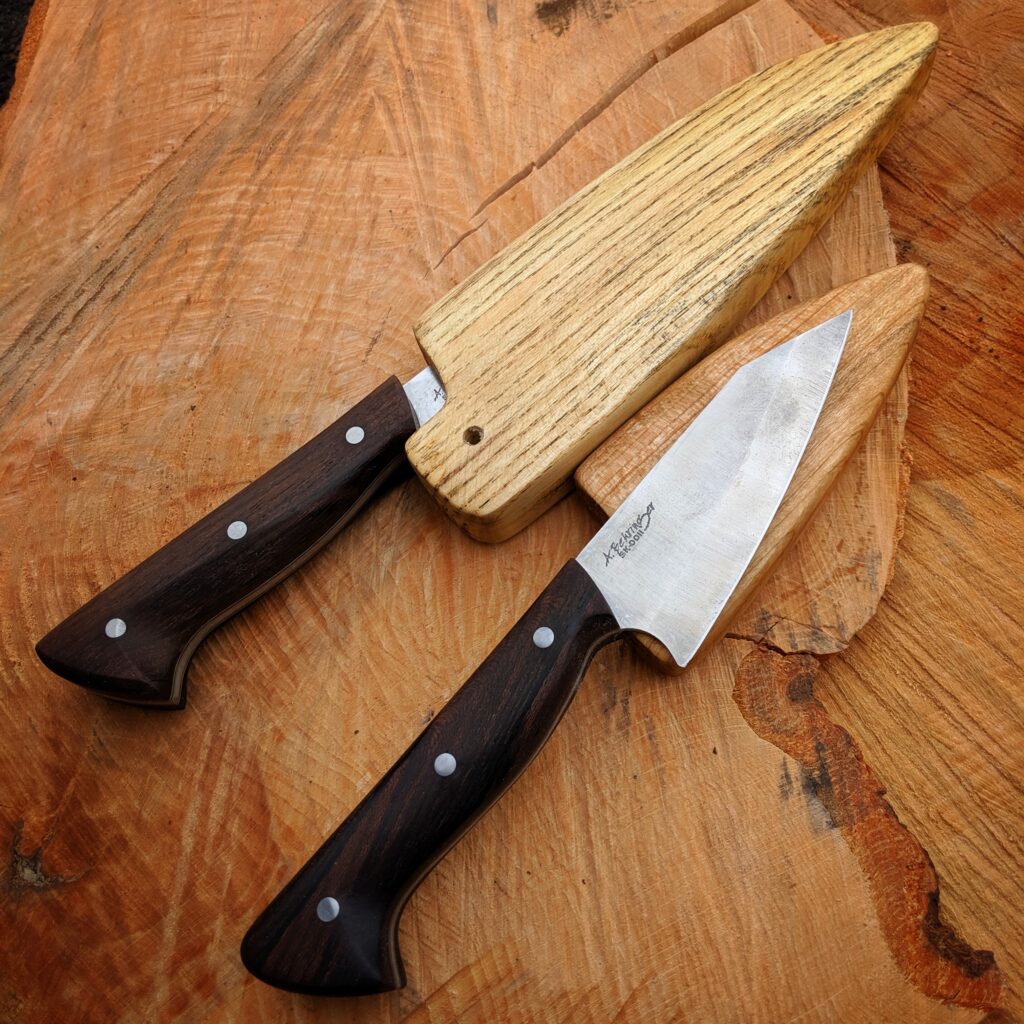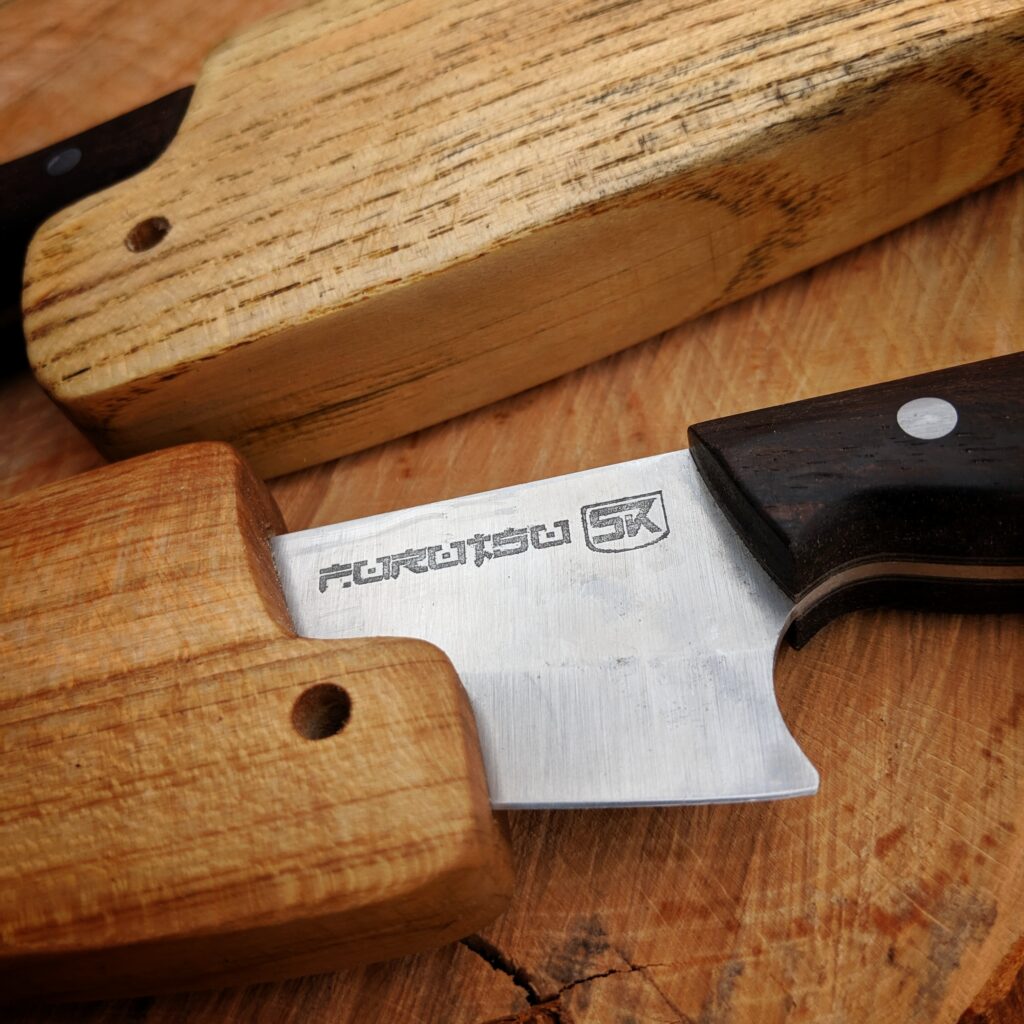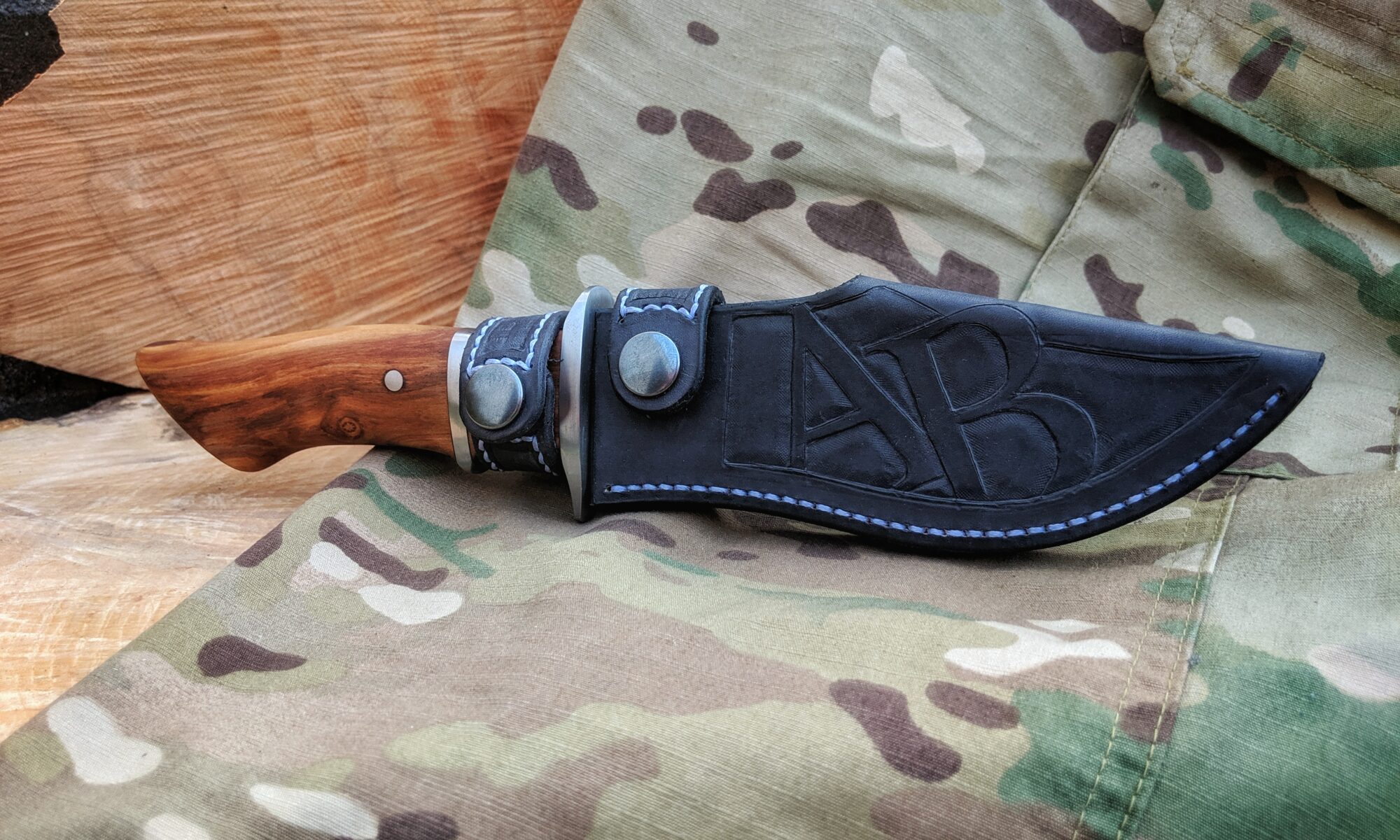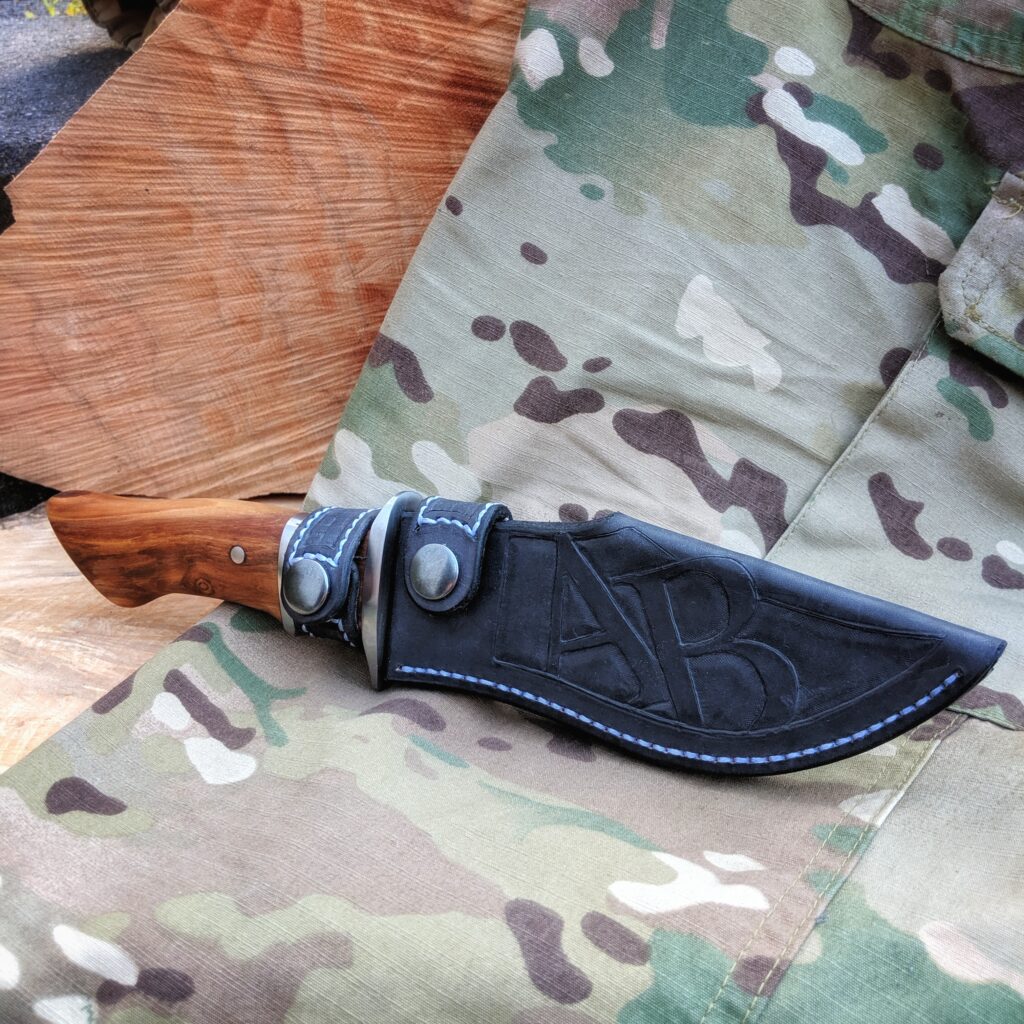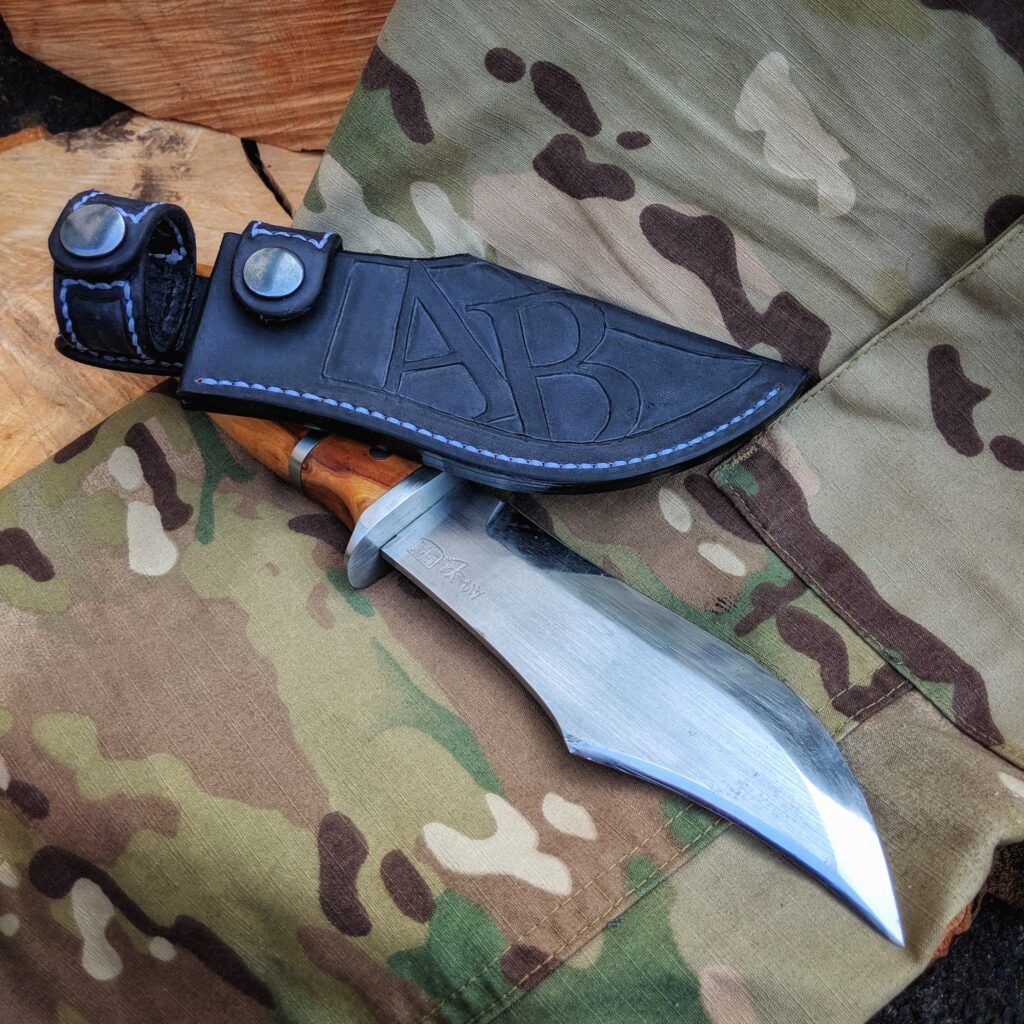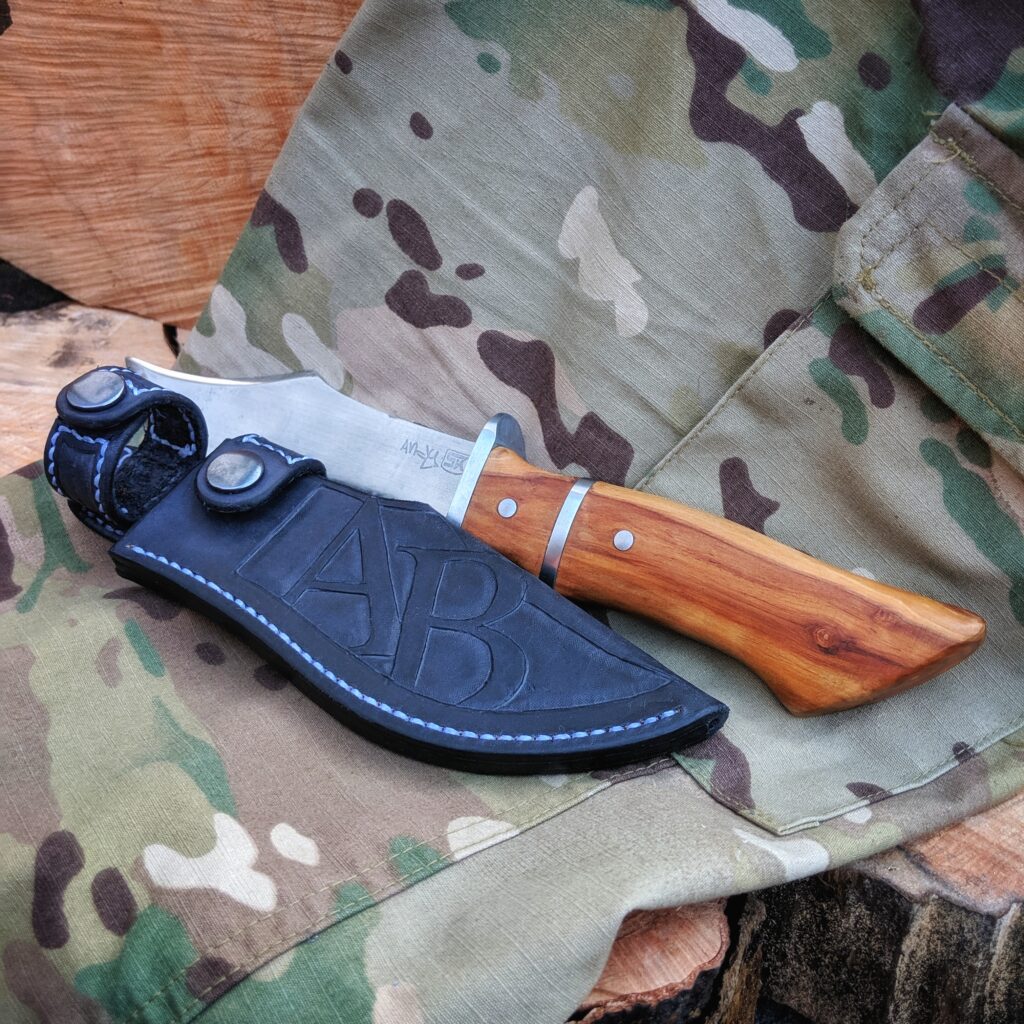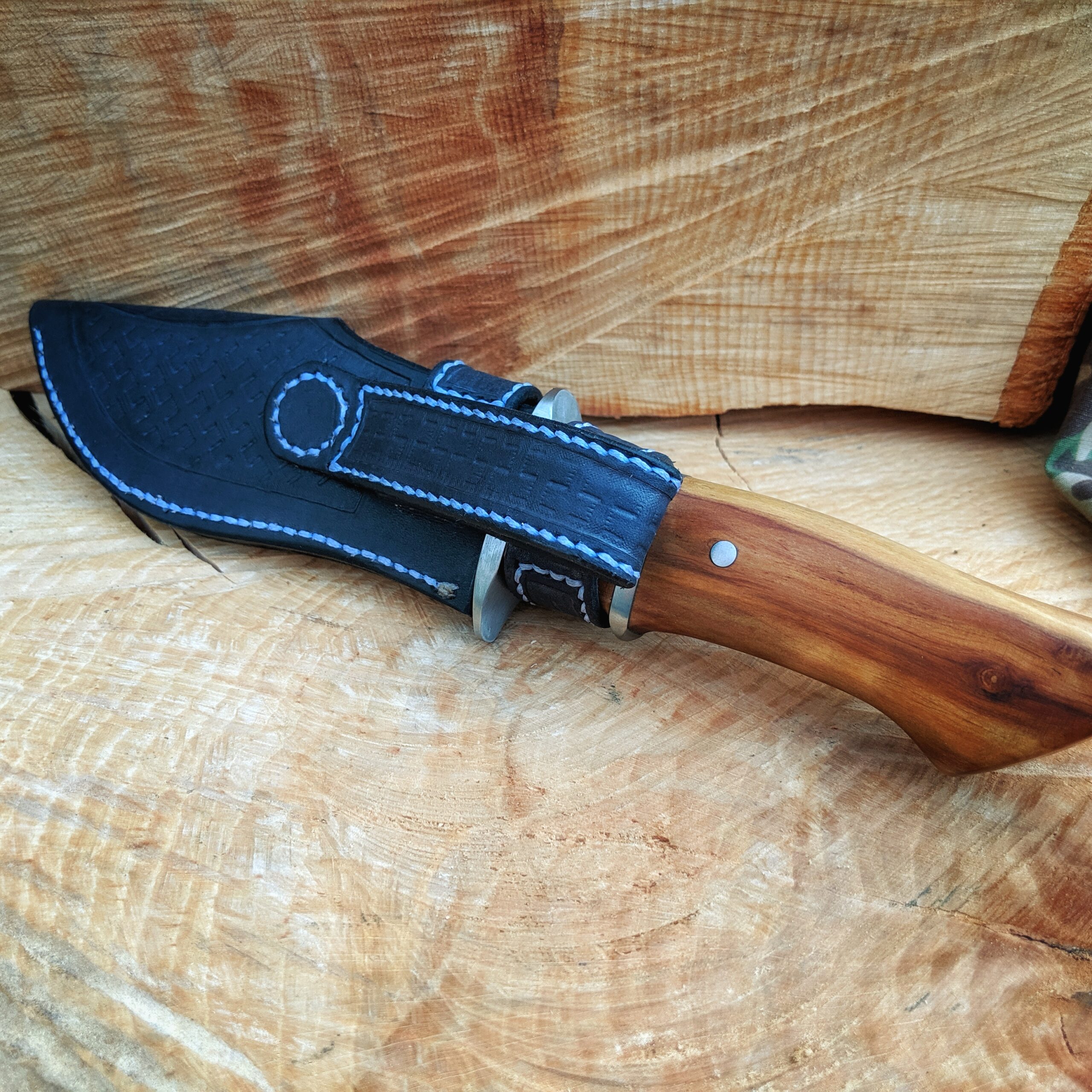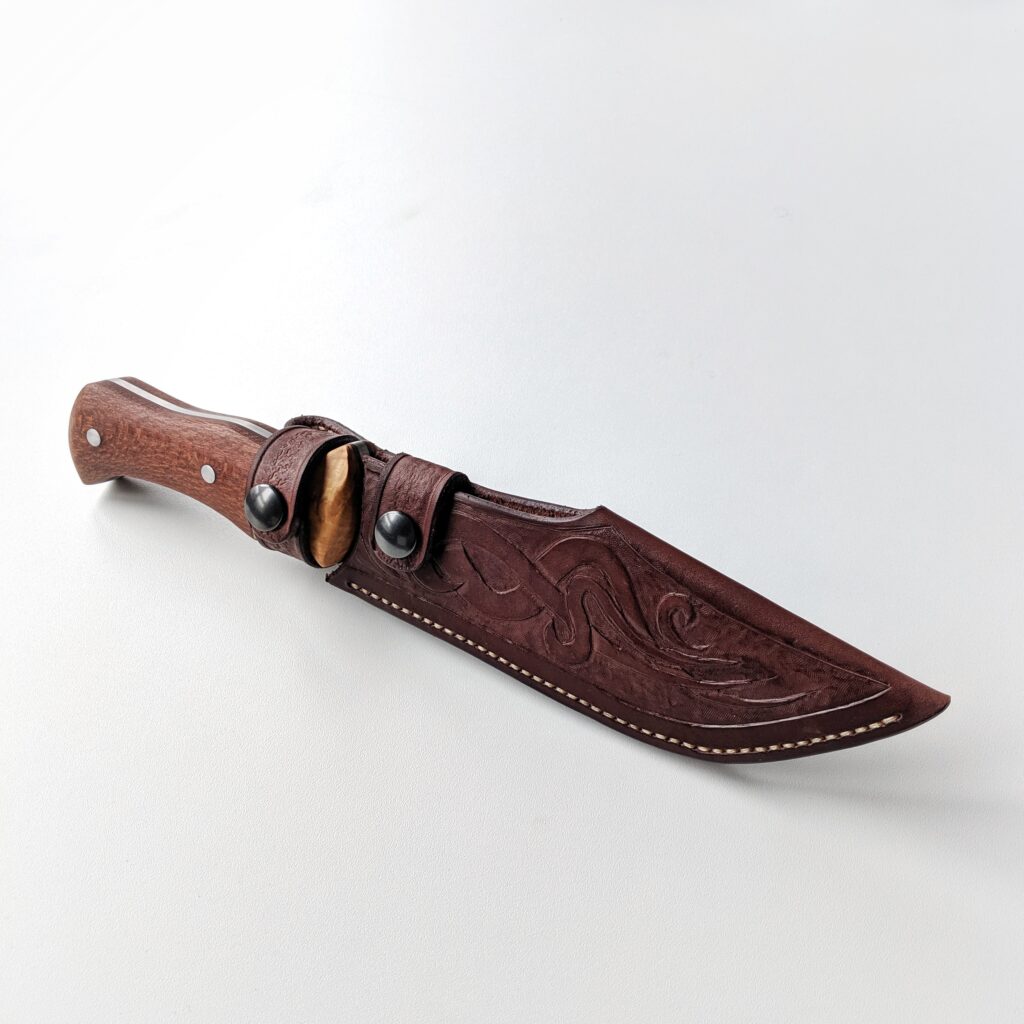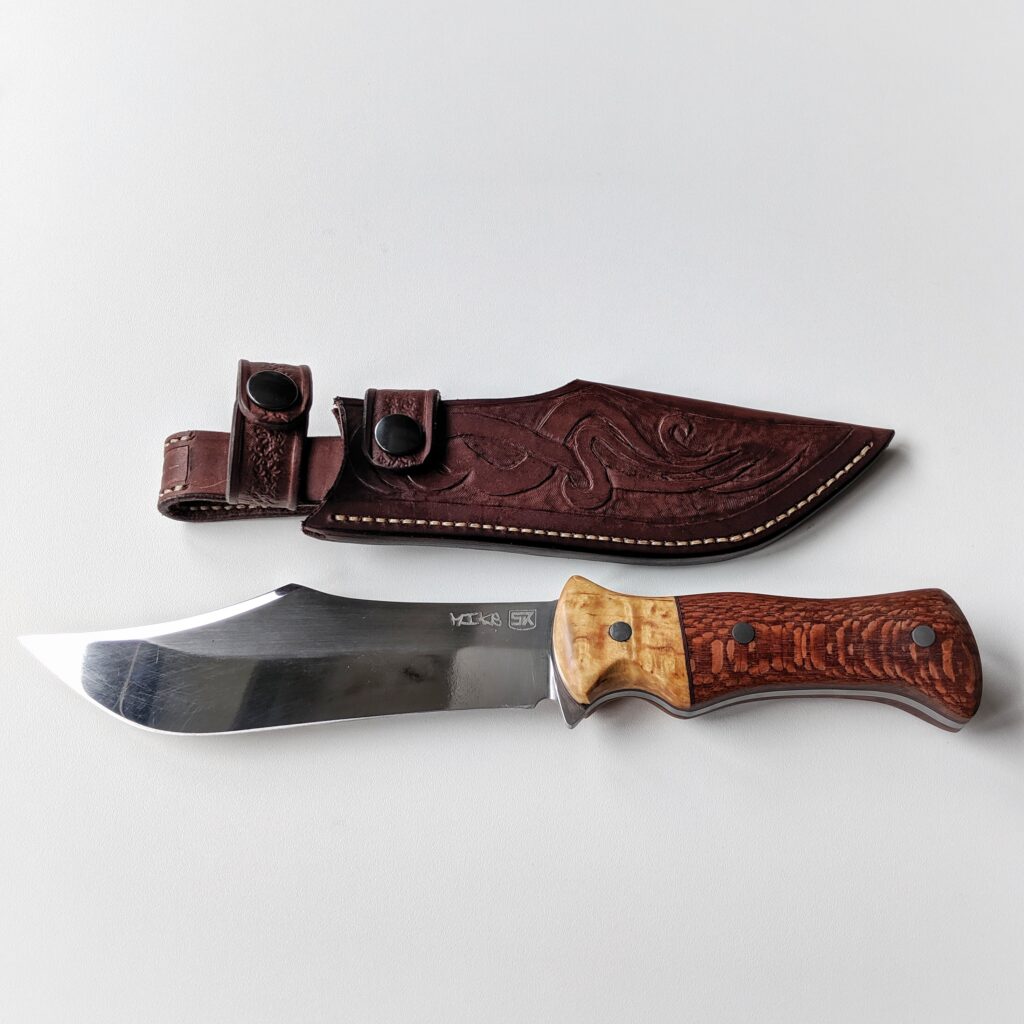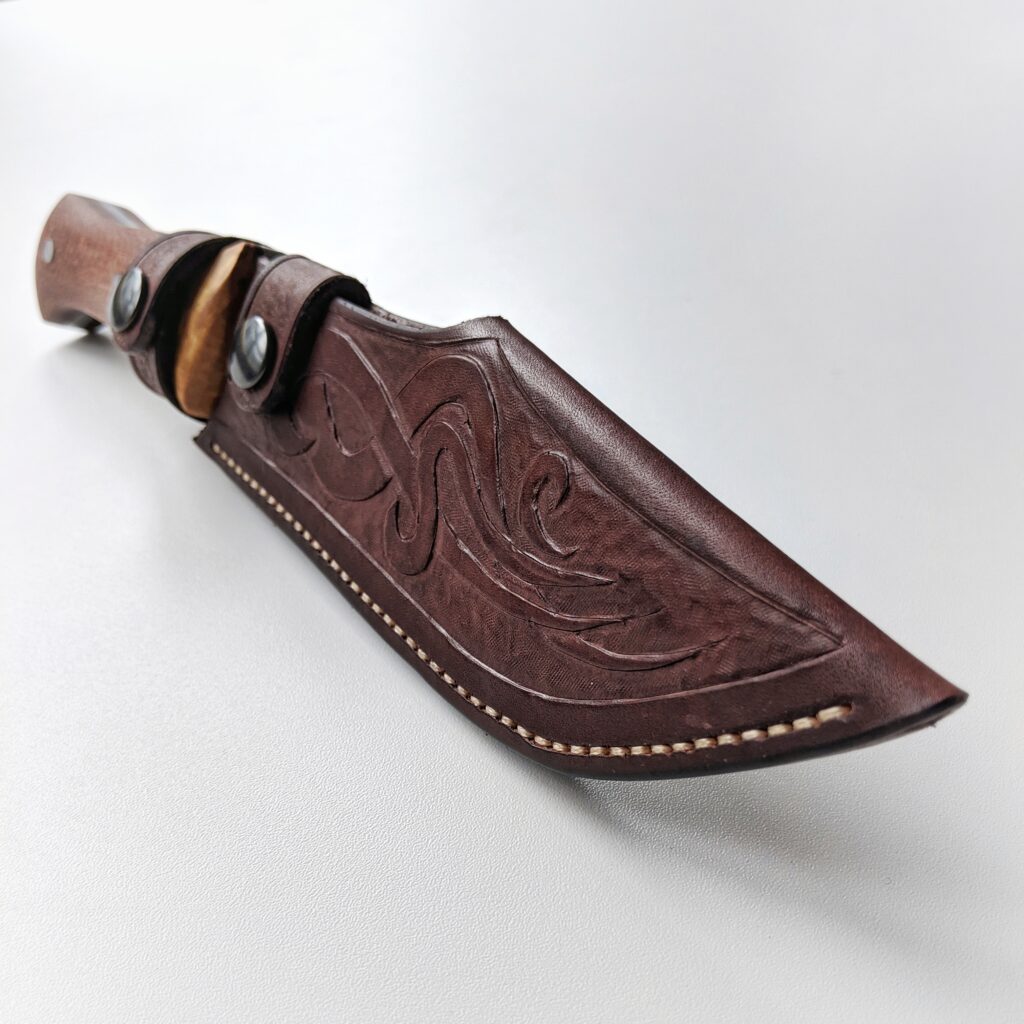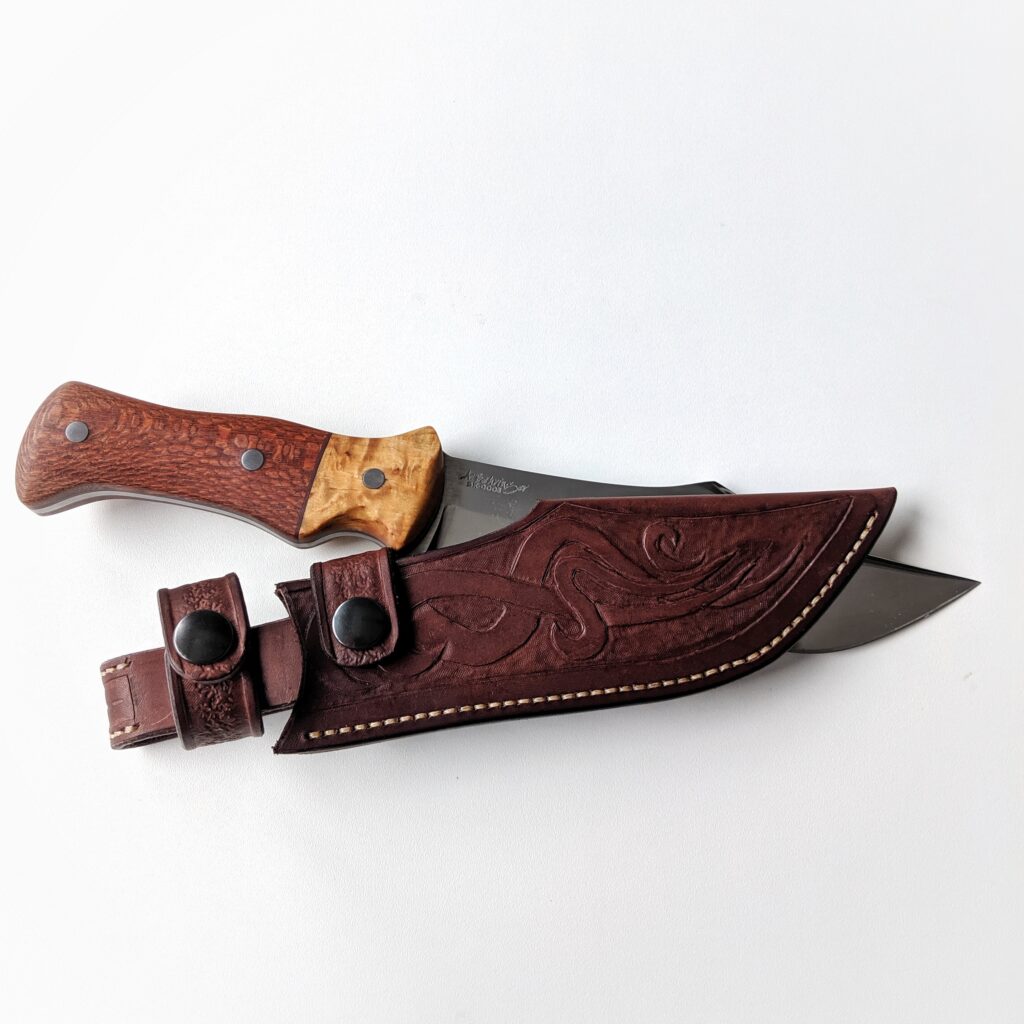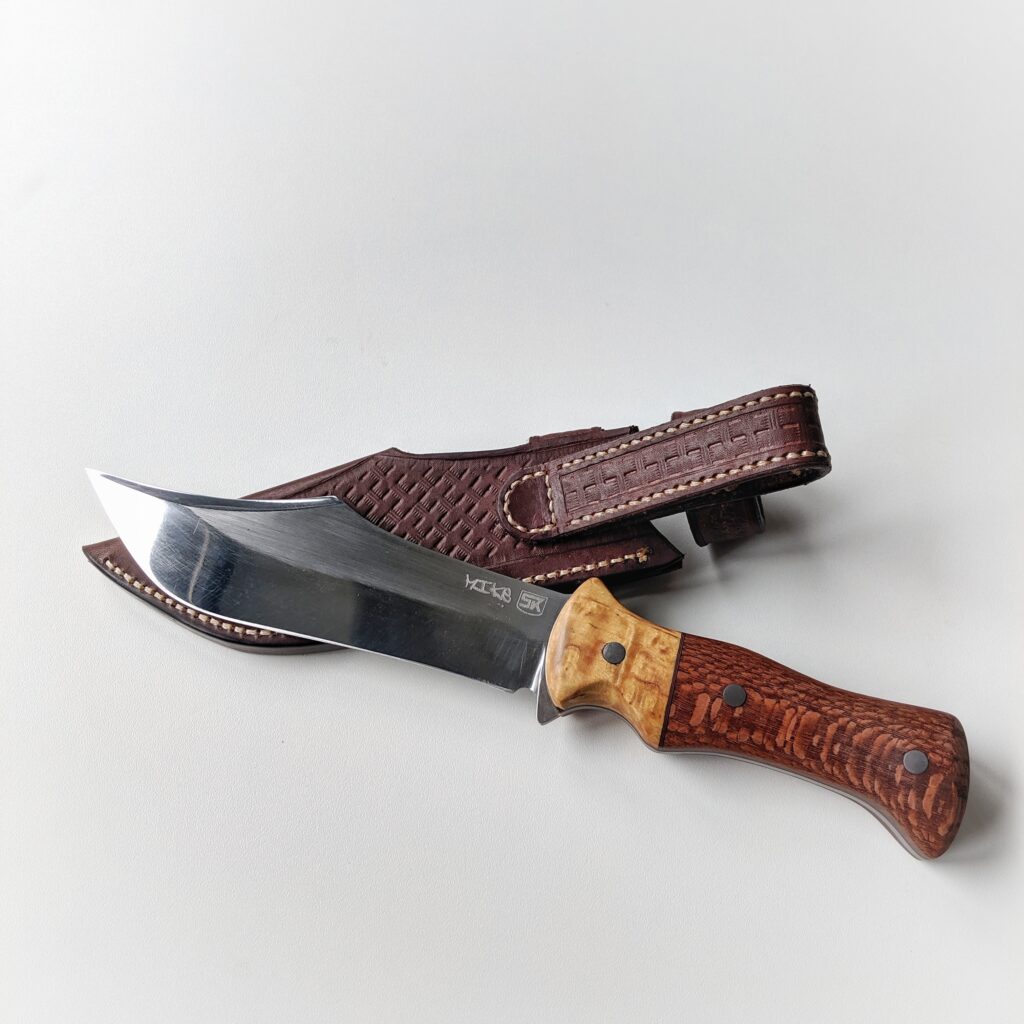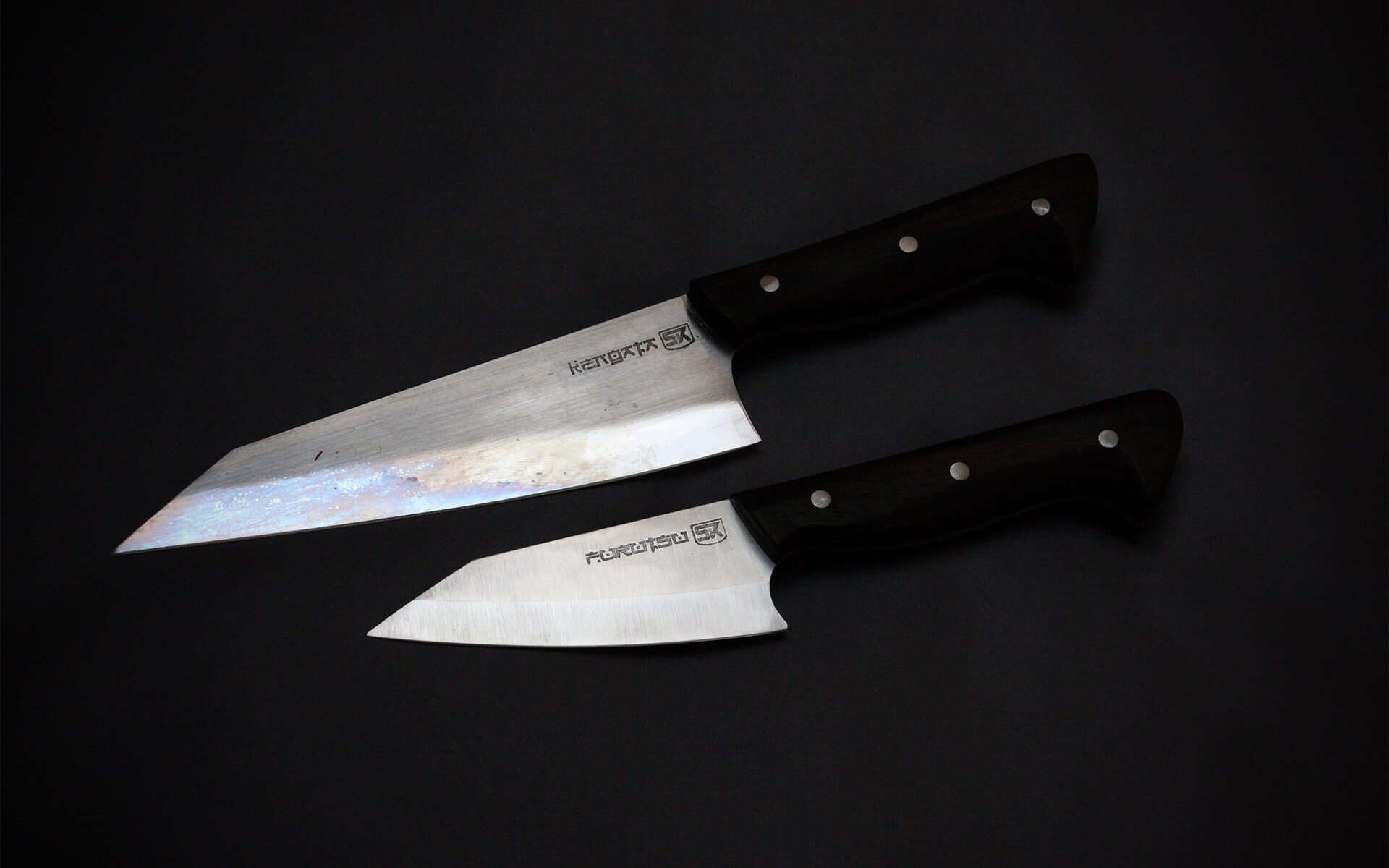For a long time, I had a picture in my mind of a hunting knife with a constant flowing line from the tip of the blade to the heel of the handle. A simple but appealing knife form that also serves perfectly as an EDC.
My first design was quickly drafted on the PC, but when it comes to dimensions and proportions a desktop screen is not the best solution so I always print it on paper and cut it out – and oh boy that blade was too big for an EDC. So I shortened my design and brought that onto the steel blank.
I asked my younger son (10) what would be a nice name for a blade and he made some suggestions. One was “Hai”, English “Shark” and I thought about the Serpent Wood I had in mind for the handle and with those stripes could be tiger stripes – so I said “Tigerhai”, English Tigershark and we agreed.
Learnings
I learned a lot while making this blade. One goal was to try to do as many steps as possible on the belt grinder instead of lengthy hand sanding. The mistake was, that I went too far using a rough 40 grit belt while shaping the bevels so I ended up with a thin blade with still deep scratches. I managed to grind out most of them then went to etch my maker’s mark and the “Tigershark” logo into the blade. First of all the logo had too wide letters – this makes it harder to get a consistent and clean etching. I ran into a second problem because I had etched too early and while cleaning up the surface of the blade ground out too much of the etching.
I have had problems with the micarta liners while gluing the layers directly to the wood. The wood soaks up the epoxy and starts bending, then the epoxy gets dry and the wood stays bent. It is close to impossible to bend back the handle scales – I tried that. This time I made the Micarta liners separately and then drilled and glued steel, Micarta liners, and wood together in one step. Also, I used screw clamps for more pressure than simple clamps and that did the trick to get a perfect flat connection between steel and handle scales.
Feedback I got
A friend of mine is a professional hunter and I did not know he is also a passionate collector of knives and he did not know rom me that I am a passionate maker of knives. He got very interested in my work and i showed him around in my small workshop.
He liked the Tigershark a lot and gave me some good tips on how I could improve the knife, especially the handle I was shaping at that time. I was able to let his suggestions influence the final shape of the knife and he and I like the final result.
Conclusion
I like the blade shape and the look of the wood and will take this design into my repertoire of blades I will continue to make. This knife has its flaws so I am not sure if I will keep it for my own or just wait for an offer that I like. Either way, I will make a sheath for it later.
